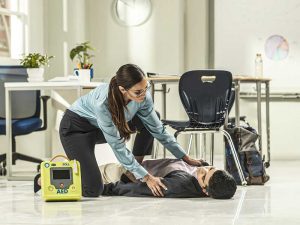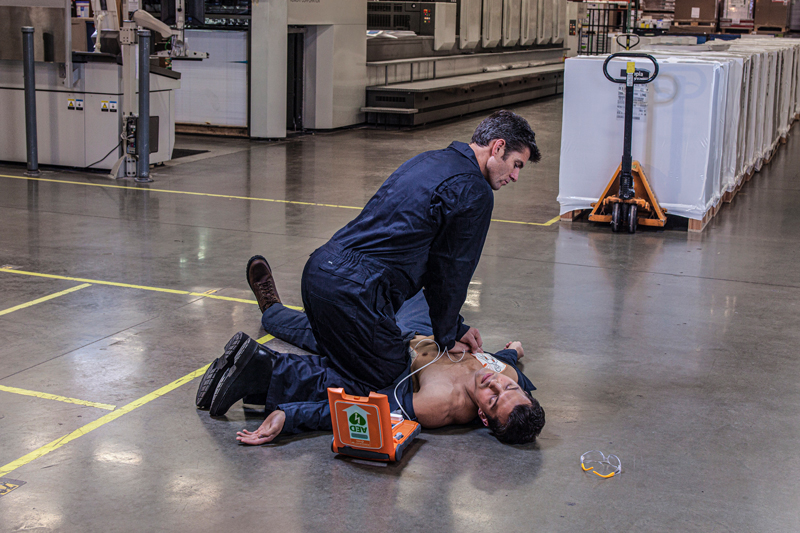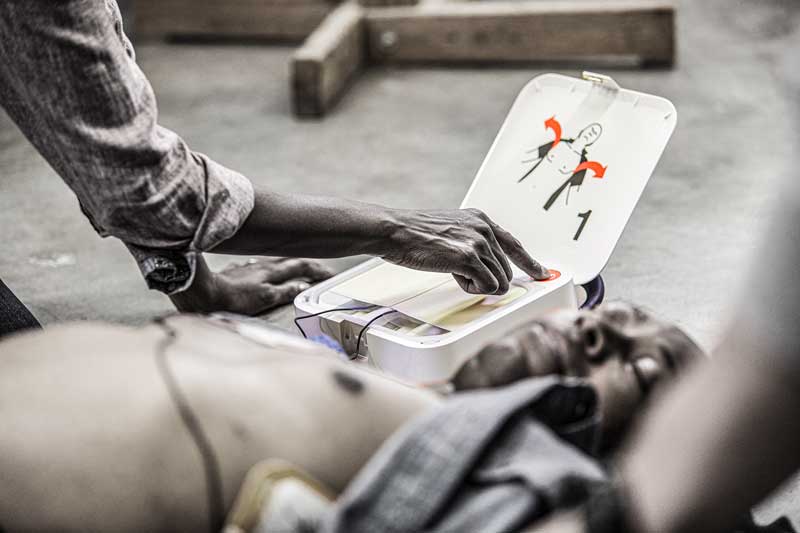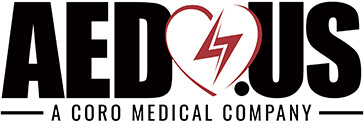What is the Chain of Survival?
The Chain of Survival refers to a series of actions that rescuers (bystanders or paramedics) need to take to improve the likelihood of survival following a cardiac arrest. Knowing and understanding the six key “links” in the chain can greatly reduce mortality rates.
Sudden Cardiac arrest is an electrical malfunction in the heart that causes an irregular heartbeat (arrhythmia) and disrupts the flow of blood to the brain, lungs and other organs. It is a leading cause of death. Each year, more than 350,000 out-of-hospital cardiac arrests occur in the United States according to the American Heart Association. When a person has a cardiac arrest, survival depends on immediately getting CPR from someone nearby. Almost 90 percent of people who suffer out-of-hospital cardiac arrests die. CPR, especially if performed in the first few minutes of cardiac arrest, can double or triple a person’s chance of survival.
The 6 links in the adult out-of-hospital Chain of Survival are:
- Recognition of Cardiac Arrest and Activation of the Emergency Response System
- Immediate High-Quality Cardiopulmonary Resuscitation (CPR)
- Rapid Defibrillation
- Basic and Advanced Emergency Medical Services
- Advanced Life Support and Post-Cardiac Arrest Care
- Recovery

Recognition of Cardiac Arrest and Activation of EMS

The first step is so critical. It actually puts the wheels in motion toward giving the victim access to the best care.
- Recognize the emergency and decide to act
- Call 9-1-1, activate the on-site emergency response system and send someone to retrieve the nearest AED (Automated External Defibrillator) If the rescuer is alone, he or she should retrieve the AED immediately.
Immediate High-Quality CPR

Starting High-Quality CPR immediately re-introduces life-giving oxygenated blood-flow to the vital organs, particularly the heart and brain. High-Quality CPR can allow the heart to be in much better condition for a defibrillation shock than if CPR is not performed.
- Start CPR Immediately
- If you do not know how to perform CPR, a 911 operator will talk you through the procedure. If you are not trained in CPR, use hands-only CPR by pushing hard and fast on the center of the chest at a rate of 100-120 compressions per minute
Rapid Defibrillation

- As soon as an AED becomes available, the rescuer should place the device next to the victim. Simply turn it on and follow the visual and audio prompts. He or she should then attach the electrode pads to the victim’s bare chest as shown in the diagram on the pads
- If a shock is advised, stand clear and make sure no one is in contact with the patient.
Basic and Advanced Emergency Medical Service
- Refers to the rapid response of highly trained and equipped EMS personnel who can respond to the patient, administer medications, and offer advanced interventions as needed. This link is reliant on the very first link in the chain: early recognition and call for emergency assistance.
Advanced Life Support and Post-Cardiac Arrest Care
- Refers to comprehensive care by medical professionals
Recovery
- Includes additional treatment, observation, rehabilitation, and psychological support
If you have any questions or are interested in learning more about AEDs or CPR training please reach out to us or call 800-695-1209.

Written by Blaire Kingsmore
Customer Service Director
Fact checked by Phillip Woods, BA, NREMT-P, FP-C
Blaire attended the University of Tennessee where she graduated with a Bachelor of Science in Human Ecology- Child and Family Studies. She has been in the Automated External Defibrillator (AED) industry for over eight years and is the Director of Customer Service for Coro Medical. Blaire is also an American Red Cross-certified CPR/AED/First Aid Instructor, highly trained by each manufacturer on their specific AEDs, and knowledgeable regarding ALL State AED regulations and legislation.
“I know that every day I come to work, I am playing a part in saving someone’s life. I am passionate about these devices and am always looking for new and innovative ways to spread awareness and knowledge about Sudden Cardiac Arrest (SCA). I look forward to the day when everywhere I go, I will see an AED—when SCA will no longer take any lives.”
Last updated August 19, 2021 – Added sixth link in the Chain of Survival per 2020 AHA Guidelines for CPR & ECC





